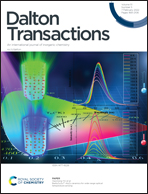Facile synthesis of an organic/inorganic hybrid 2D structure tincone film by molecular layer deposition†
Abstract
Organic/inorganic hybrid tincone films were deposited by molecular layer deposition (MLD) using N,N′-tert-butyl-1,1-dimethylethylenediamine stannylene(II) as a precursor and hydroquinone (HQ) as an organic reactant. From previous studies it is known that SnO can be fabricated through a reaction with H2O, which has low oxidizing power. Similarly, when combined with HQ having a bi-functional hydroxyl group, SnO-based 2D hybrid tincones can be produced. In most aromatic ring-based metalcones described in previous studies, graphitization by pyrolysis occurred during post-annealing. In this study of tincones fabricated with a divalent precursor after a vacuum post-annealing process, the structural rearrangement of the SnO and the benzene ring bonds proceeded to form a SnO-based hybrid 2D structure. The rearrangement of the resulting structure occurred through π–π stacking (without pyrolysis) of the benzene ring. To understand the mechanism of fabrication of 2D hybrid tincones by π–π stacking of the benzene ring and the increase of the crystallinity of SnO after the annealing process, the structural rearrangement was observed using X-ray photoelectron spectroscopy (XPS), grazing incidence X-ray diffraction (GIXRD), grazing-incidence wide-angle X-ray scattering (GIWAXS), and Raman spectroscopy. Thereafter, the design of the crystal structure was investigated.

- This article is part of the themed collection: Spotlight Collection: Atomic and Molecular Layer Deposition


 Please wait while we load your content...
Please wait while we load your content...